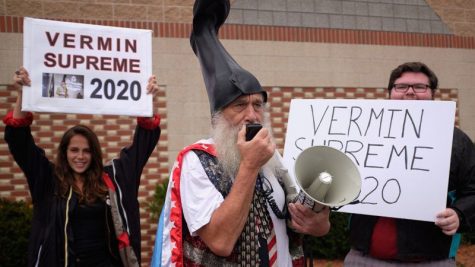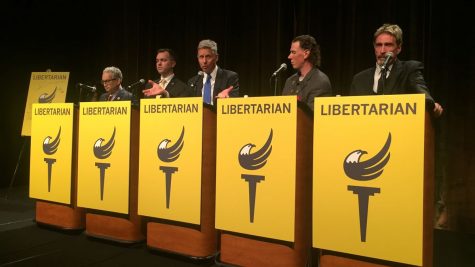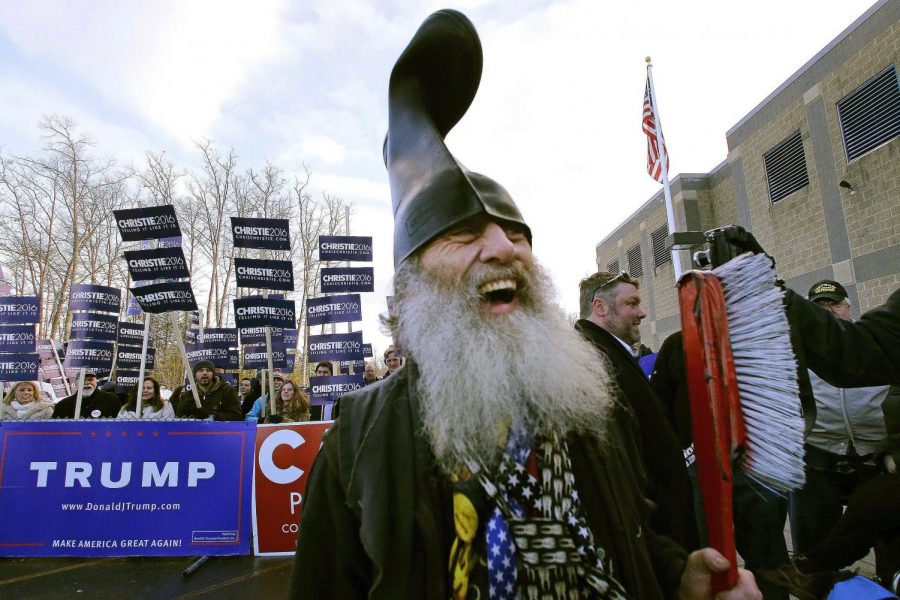Election 2020 Update: Plan C
“The lesser of two evils” has become almost a political mantra in America. When faced with two unsavory potential futures for the nation, it is American tradition to bite our tongues and weigh our values like slabs of meat at the deli. On the topic of abortion alone, 30% of Democrats and Republicans deviate from their respective party’s chosen stance, and 40% of Republicans believe too little is being done to combat climate change. The fact of the matter is, there’s a growing disillusionment in democracy, evidenced by a majority of Americans not having faith in themselves with making political decisions on a national level. In short, the tradition of red and blue fighting it out for ultimate supremacy clearly has not been healthy, leading to a lack of accurate representation within democracy as well as political apathy. How does one, then, escape from this bond of polarity? Well, as almost 4.5 million Americans figured in 2016, the only way forward might just have to be through a third party—the Libertarian Party.
There is, of course, just one problem: Libertarians are wackos. Alex Jones is a registered Libertarian, and the third-place candidate of the Libertarian National Convention wore a boot over his head and called himself “Vermin Supreme.” This poses a problem for public image. And so does the stated platform of the Libertarian Party which, among other adamantine points, calls for: the decriminalization of prostitution, abolition of compulsory taxation, and the re-privatization of education.
 With these facts alone, one could easily disqualify the party from having any legitimacy whatsoever, but, with 600,000 registered Libertarians as well as 200 Libertarians elected to state-wide and local office, there most certainly is an ever-growing platform for what one might describe as lunacy and, another, the “Party of Principle.” Both Jo Jorgenson and Gary Johnson have shown the strongest third party campaigns since Ross Perot. Whether it be in spite of or due to its bizarre set of core beliefs and public figures, the Libertarian Party might just be on the road to reshaping the electoral map as we know it. States traditionally a part of the “red wall” such as North Dakota, Utah, Montana, Indiana, and Alaska all have begun to shift towards Libertarianism. In 2016, Johnson received nearly 10% of the vote in New Mexico. Clearly, by these numbers, Libertarian domination is nowhere near close to achievable; however, in order to be seen as credible, the party simply needs to draw within striking distance of some partisan strongholds, and the threat of tearing down the “red wall” (as well as a few solid blue states in the process) is as credible as it gets. On the condition that the Libertarian Party reels in its base from becoming radical freedom-hungry militiamen and solidifies its growing support among the youth, white males, and Hispanics through a straightforward message of civil and economic liberty, a three-party system is most certainly possible. Considering that more Americans care about ameliorating the economy than COVID-19 relief, the Libertarian message of prosperity through self-action is, in theory, an appealing one.
With these facts alone, one could easily disqualify the party from having any legitimacy whatsoever, but, with 600,000 registered Libertarians as well as 200 Libertarians elected to state-wide and local office, there most certainly is an ever-growing platform for what one might describe as lunacy and, another, the “Party of Principle.” Both Jo Jorgenson and Gary Johnson have shown the strongest third party campaigns since Ross Perot. Whether it be in spite of or due to its bizarre set of core beliefs and public figures, the Libertarian Party might just be on the road to reshaping the electoral map as we know it. States traditionally a part of the “red wall” such as North Dakota, Utah, Montana, Indiana, and Alaska all have begun to shift towards Libertarianism. In 2016, Johnson received nearly 10% of the vote in New Mexico. Clearly, by these numbers, Libertarian domination is nowhere near close to achievable; however, in order to be seen as credible, the party simply needs to draw within striking distance of some partisan strongholds, and the threat of tearing down the “red wall” (as well as a few solid blue states in the process) is as credible as it gets. On the condition that the Libertarian Party reels in its base from becoming radical freedom-hungry militiamen and solidifies its growing support among the youth, white males, and Hispanics through a straightforward message of civil and economic liberty, a three-party system is most certainly possible. Considering that more Americans care about ameliorating the economy than COVID-19 relief, the Libertarian message of prosperity through self-action is, in theory, an appealing one.
 If Gary Johnson knew where Aleppo was, if the hooting and hollering about taxation and theft would stop, America would have a chance to break from the monotony of blue and red. Imagine, “the golden wall”: a future where neglected states finally had an opportunity to express themselves politically beyond the proselytizing GOP and economically-left Democratic Party. Instead of a “lesser of two evils,” one might, in a few years, be able to choose from the “least of several evils.” It isn’t perfect, but, in a constant and unchanging battle of tug-of-war between two slightly dissimilar parties, a shake-up is what is needed.
If Gary Johnson knew where Aleppo was, if the hooting and hollering about taxation and theft would stop, America would have a chance to break from the monotony of blue and red. Imagine, “the golden wall”: a future where neglected states finally had an opportunity to express themselves politically beyond the proselytizing GOP and economically-left Democratic Party. Instead of a “lesser of two evils,” one might, in a few years, be able to choose from the “least of several evils.” It isn’t perfect, but, in a constant and unchanging battle of tug-of-war between two slightly dissimilar parties, a shake-up is what is needed.

Jack Dougherty is a senior at Keystone who enjoys participating in Model UN and Academic Worldquest and has lately found himself in the midst of helping...

